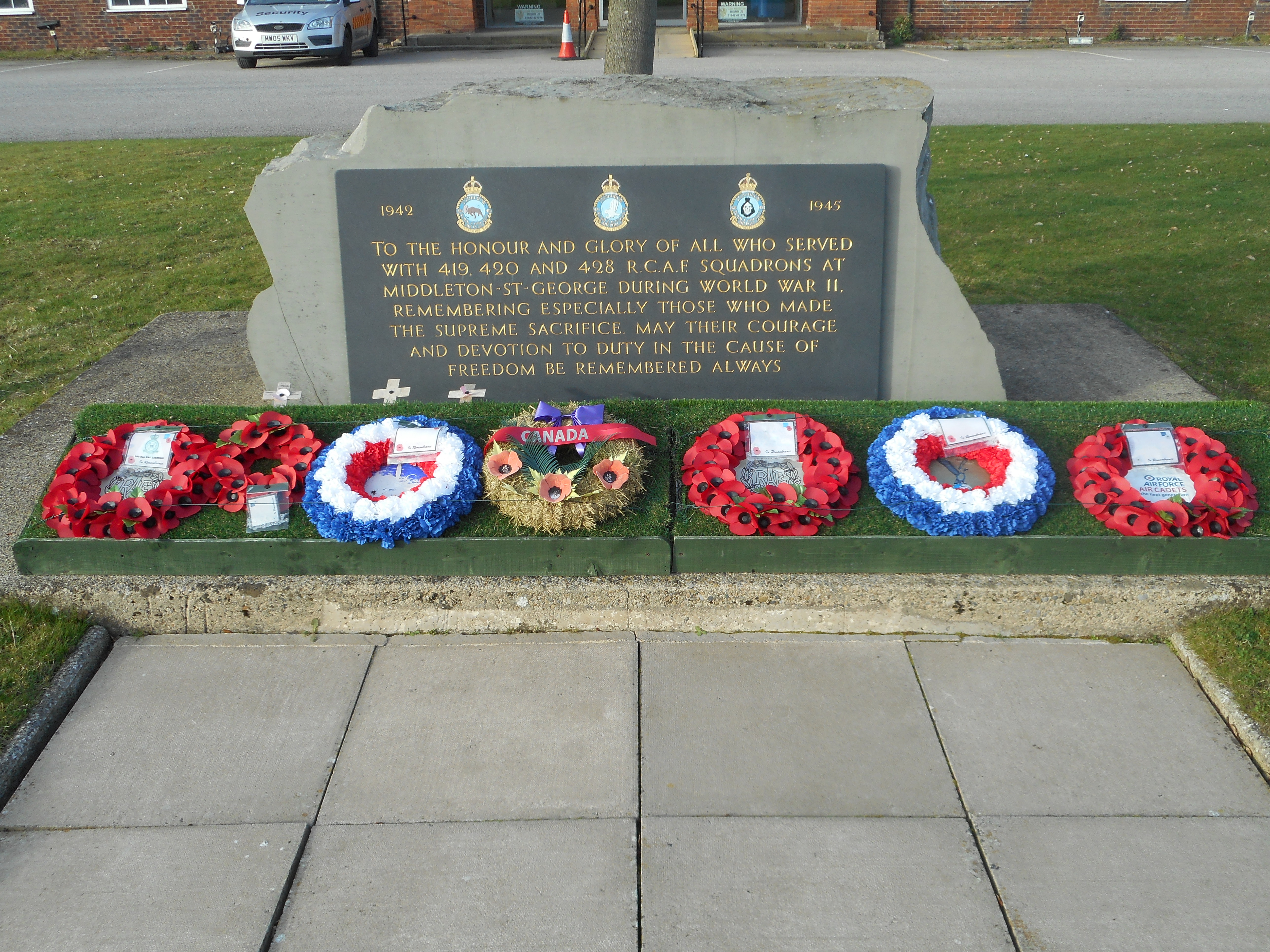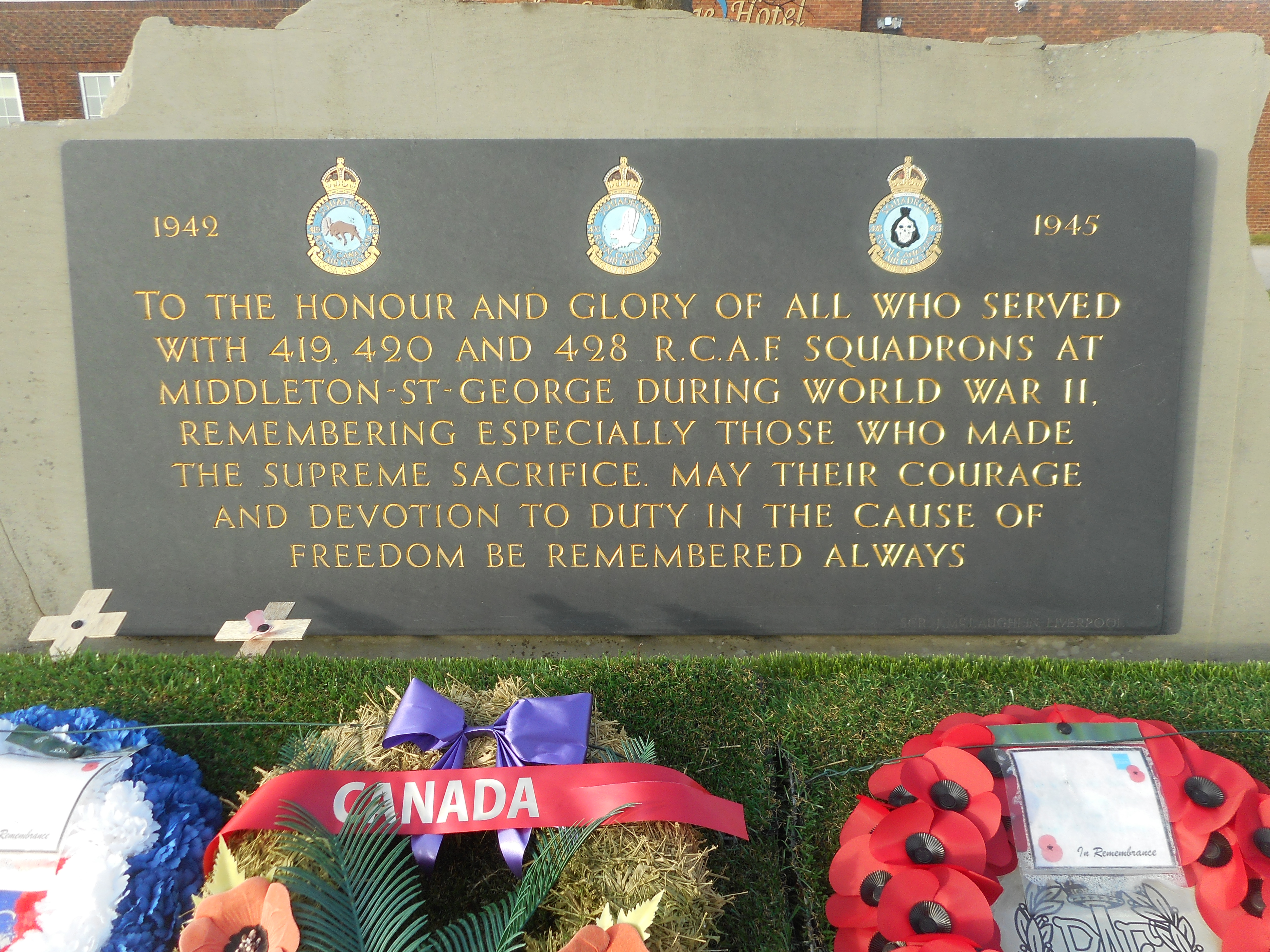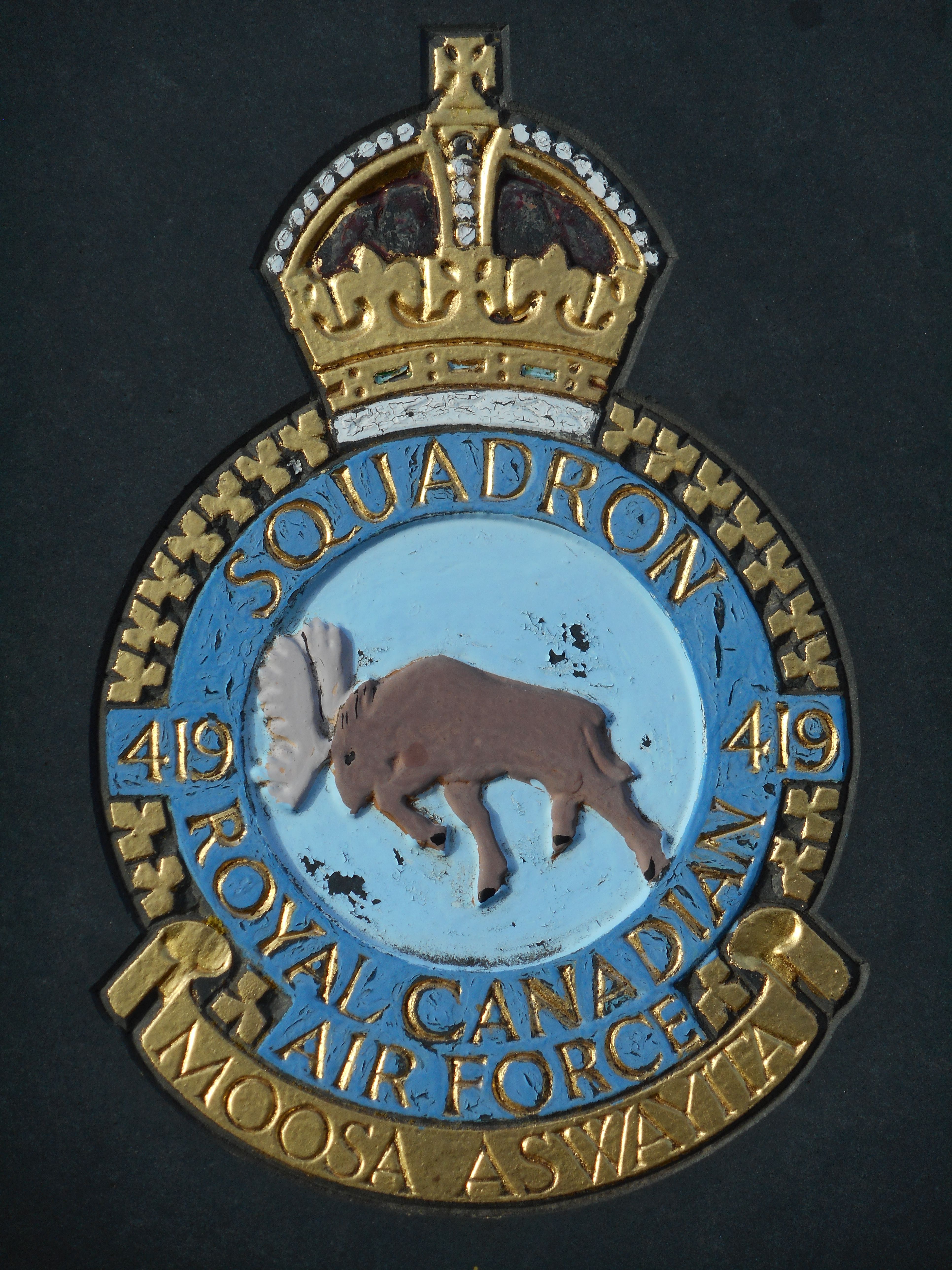Handforth, Stanley Willard
Personal Information
| Rank | F/O |
| Forename(s) | Stanley Willard |
| Surname | Handforth |
| Gender | M |
| Age | 28 |
| Date of Death | 26-07-1943 |
| Next of Kin | Son of Burt Handforth and Catharine Handforth (née McNally), of Toronto, Ontario, Canada. Husband of Melba Irene Handforth (née Redshaw), whom he married on 17 January 1942. |
Aircraft Information
| Aircraft | Handley Page Halifax II |
| Serial Number | JD256 |
| Markings | VR-A |
Memorial Information
| Burial/Memorial Country | Germany |
| Burial/Memorial Place | Reichswald Forest War Cemetery |
| Grave Reference | 6. E. 3. |
| Epitaph |
IBCC Memorial Information
| Phase | 2 |
| Panel Number | 176 |
Enlistment Information
| Service Number | J/8376 |
| Service | Royal Canadian Air Force |
| Group | 6 |
| Squadron | 419 (Moose) |
| Squadron Motto | Moosa aswayita |
| Trade | Pilot |
| Country of Origin | Canada |
Other Memorials
| Location | Outside Former St. Georges Hotel, Teesside Airport, County Durham |
| Country | United Kingdom |
| Memorial Type | Inscribed Slate Memorial Tablet on Stone Memorial |
| Memorial Text | A memorial to Nos 419, 420 and 428 Sqns RCAF who flew from RAF Middleton St George during WW2 |
Miscellaneous Information
| F/O Handforth had arrived from 1664CU just hours before the operation. It is believed that he also instructed Sgt Chapman, the other pilot, who survived the crash and became a PoW |
| Stanley was born at Toronto on 7 May 1915. His father was born in Manchester, England and worked as a barber and his wife was born in Grey County, Ontario. He had a sister, Mae. The schools he attended were Rose Avenue Public School 1921 -1927 and Jarvis Collegiate High School 1927-1935 (Senior Matric). He also took an International Correspondence course in Analytical and Industrial Chemistry. His sport interests were many including baseball, hockey, golf, rugby and tennis, and his hobby was chemistry. Stanley worked for Colgate-Palmolive Company, Toronto as a (Perfume compounder) where he was an Assistant operator from 1936 onwards. |
| He enlisted on 13 November 1940 and appeared in the U.K. at 14 (P)AFU on 9 March 1943. He was then at 23 OTU on 20 April 1943, 1664 CU 3 July 1943, and at 419 Squadron on 25 July 1943. Very sadly just seven hours after arrival at 419 Squadron Stanley, flying as a second pilot was to lose his life. |
Commonwealth War Graves Commission
The National Archives
| Record of Events (Operational Record Book) AIR 27/1822/36 |
| Summary of Events (Operational Record Book) AIR 27/1822/35 |
Fellow Servicemen
Please note that this list gives all the losses aboard the quoted aircraft and occasionally these may have occurred on an earlier date when the aircraft was not itself lost. Please check the dates of death carefully.
Last Operation Information
| Start Date | 25-07-1943 |
| End Date | 26-07-1943 |
| Takeoff Station | Middleton St. George |
| Day/Night Raid | Night (32% moon) |
| Operation | Essen. 705 aircraft, 26 losses (3.7%). The commander of the American 8th Air Force was an observer in this raid, aboard an 83 Sqn Lancaster. Window was once again used and the raid was a success with much damage to the industrial eastern part of the city. In particular, the Krupps facility was dealt what was probably the worst blow of the war. Dr Krupp suffered a stroke the following morning from which he never recovered (he would otherwise have been charged with war crimes after the war). 51 other industrial buildings and 2852 homes were destroyed. 500 people were killed, including 22 children. |
| Reason for Loss | Crashed in the target area, possibly after colliding with another aircraft |



